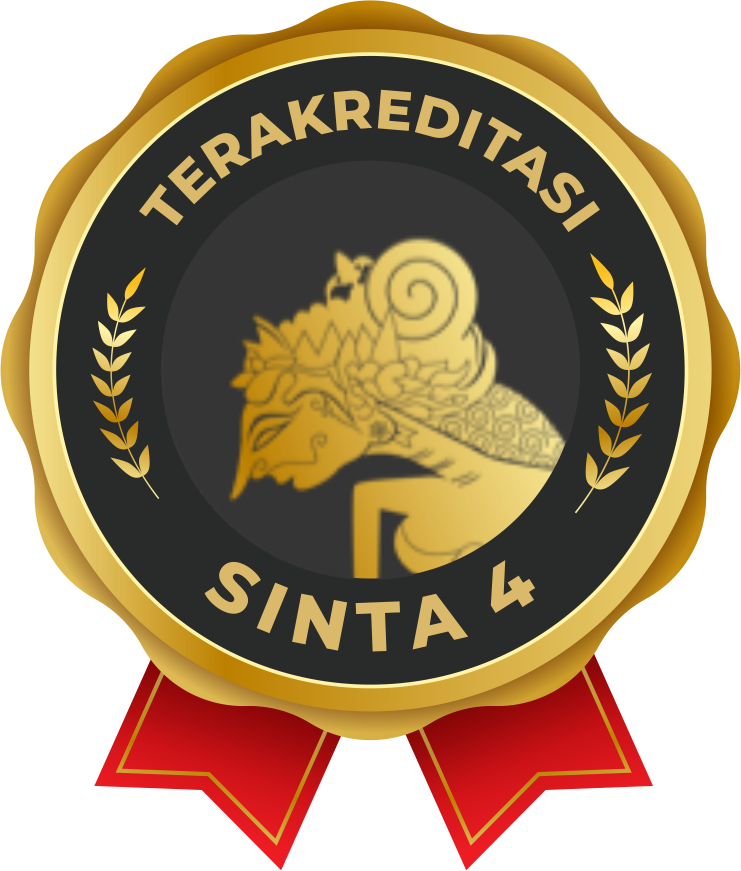BIBLIOMETRIC ANALYSIS: FACTORS CAUSING AND PREVENTION STRATEGIES FOR BURNOUT IN THE WORKPLACE
Abstract
Every individual undoubtedly possesses different physical abilities and psychological conditions, especially when facing life situations, whether it is work-related or in other contexts. A challenging situation or condition can make someone feel pressured and experience prolonged stress if not handled properly. This physical, emotional, and mental exhaustion is known as burnout. This study discusses burnout, which has been addressed in previous research from 2018 to 2023. The method used in this research is to identify the number of journals using Harzing’s Publish or Perish software, as well as bibliometric analysis using VOSviewer. The research results show that there are 200 publications with 60,448 citations and 10,074.67 citations per year discussing burnout. There are eight main clusters based on the bibliometric analysis. This article also provides information on research topics that have not been widely explored, thus offering benefits to future researchers interested in discussing burnout.
Downloads
References
Allam, Z., Asad, M., Ali, N., & Malik, A. (2022). Bibliometric analysis of research visualizations of knowledge aspects on burnout among teachers from 2012 to January 2022. 2022 International Conference on Decision Aid Sciences and Applications (DASA), 126–131.
Andarika, R. (2004). Burnout pada perawat puteri RS St. Elizabeth Semarang ditinjau dari dukungan sosial. Jurnal Psyche, 1(1), 1–8.
Aumayr-Pintar, C., Cerf, C., & Parent-Thirion, A. (2018). Burnout in the Workplace: A Review of the Data and Policy Responses in the EU.
Bhowmick, S., & Mulla, Z. (2021). Who gets burnout and when? The role of personality, job control, and organizational identification in predicting burnout among police officers. Journal of Police and Criminal Psychology, 36(2), 243–255.
Corbeanu, A., Iliescu, D., Ion, A., & Spînu, R. (2023). The link between burnout and job performance: a meta-analysis. European Journal of Work and Organizational Psychology, 32(4), 599–616.
Çukurova, N., Ray, P. Ç., Bölükbaşı, A., & Çelik, G. (2023). COVID-19 pandemic and burnout: factors associated with burnout levels among healthcare workers. Cukurova Medical Journal, 48(2), 669–678.
Demerouti, E., & Adaloudis, N. (2024). Addressing Burnout in Organisations: A Literature Review. ETUI Research Paper-Working Paper.
Divinakumar, K. J., Bhat, P. S., Prakash, J., & Srivastava, K. (2019). Personality traits and its correlation to burnout in female nurses. Industrial Psychiatry Journal, 28(1), 24–28.
Edú-Valsania, S., Laguía, A., & Moriano, J. A. (2022). Burnout: A review of theory and measurement. International Journal of Environmental Research and Public Health, 19(3), 1780.
Etesam, F., Akhlaghi, M., Vahabi, Z., Akbarpour, S., & Sadeghian, M. H. (2021). Comparative study of occupational burnout and job stress of frontline and non-frontline healthcare workers in hospital wards during COVID-19 pandemic. Iranian Journal of Public Health, 50(7), 1428.
Grover, S., & Furnham, A. (2021). Does emotional intelligence and resilience moderate the relationship between the Dark Triad and personal and work burnout? Personality and Individual Differences, 169, 109979.
Kapusuz, A. G., & Cavuz, M. F. (2018). How individuals psychological capital mediate the relationship between big five personality traits and burnout. Journal of International Social Research, 11(59).
Katarini, N. R. (2011). Burnout Pada Karyawan Ditinjau Dari Persepsi Budaya Organisasi dan Motivasi Intrinsik di PT. Krakatau Steel.
Leiter, M. P., & Maslach, C. (2022). Pandemic implications for six areas of worklife. In Burnout While Working (pp. 21–37). Routledge.
Liu, Y., Chee, J. H., & Wang, Y. (2022). Parental burnout and resilience intervention among Chinese parents during the COVID-19 pandemic. Frontiers in Psychology, 13, 1034520.
Maharani, P. A., & Triyoga, A. (2012). Kejenuhan kerja (burnout) dengan kinerja perawat dalam pemberian asuhan keperawatan. Jurnal Stikes, 5(2), 167–178.
Moi, F. S., & Mujanah, S. (2023). Pengaruh Job Insecurity, Stres Kerja dan Self Efficacy Terhadap Kinerja Karyawan PT. Bank Rakyat Indonesia kantor Cabang Bajawa. Jurnal Riset Manajemen, 1(3), 59–74.
Mota, A. I., Lopes, J., & Oliveira, C. (2023). The burnout experience among teachers: A profile analysis. Psychology in the Schools, 60(10), 3979–3994.
Mujanah, S. (2024). The Influence of Workload, Burnout and Subjective Well Being on Employee Performance With Organizational Citizenship Behavior As An Intervening Variable in RSUD Dr. Mohammad Zyn Sampang District. International Journal of Economics (IJEC), 3(1), 232–242.
Mujanah, S. (2020). The effect of self-efficacy, competence, and emotional quotient on employee performance through career development as an intervening variable on companies. 17th International Symposium on Management (INSYMA 2020), 58–62.
Mukherjee, S., Tennant, A., & Beresford, B. (2020). Measuring burnout in pediatric oncology staff: should we be using the Maslach Burnout Inventory? Journal of Pediatric Oncology Nursing, 37(1), 55–64.
Nápoles, J. (2022). Burnout: A review of the literature. Update: Applications of Research in Music Education, 40(2), 19–26.
Sadoughi, M. (2017). The relationship between personality traits, perfectionism and job burnout: The case of Iranian high-school teachers. International Journal of Academic Research in Progressive Education and Development, 6(1), 1–10.
Setiawan, D. (2022). System Literature Review Occupational Stress: An Overview Analysis Bibliometrics. Marginal : Journal of Management, Accounting, General Finance and International Economic Issues, 2(1), 343–356.
Shah, S. M., Noranee, S., Munir, Z. A., Noranee, S., Shahruddin, S., & Mujanah, S. (2024). The Influence of Work-Life Balance, Workload and Work Environment on Burnout among Teachers in Melaka Tengah District, Malaysia. Information Management and Business Review, 16(1 (I) S), 137–152.
Skjerdingstad, N., Johnson, M. S., Johnson, S. U., Hoffart, A., & Ebrahimi, O. V. (2022). Parental burnout during the COVID‐19 pandemic. Family Process, 61(4), 1715–1729.
Tokan, O. S., & Mujanah, S. (2023). The Effect Of Workload, Burnout And Resilience On Worker Overall Performance At PT. Financial Institution Rakyat Indonesia, East Flores Waiwerang Unit. Jurnal Riset Manajemen, 1(3), 118–126.
Vătămănescu, E.-M., & Vintilă, F. (2023). A Co-Occurrence Scrutiny of Transformational Leadership, Employee Engagement, Well-Being and Burnout via a Bibliometric Analysis. Proceedings of the International Conference on Business Excellence, 17(1), 1306–1318.
Woo, J., & Engel, R. (2022). Understanding older health care workers’ burnout during covid-19. Innovation in Aging, 6(Suppl 1), 460.
Yong-Hing, C. J., Vaqar, M., Sahi, Q., & Khosa, F. (2023). Burnout: turning a crisis into an opportunity. In Canadian Association of Radiologists Journal (Vol. 74, Issue 1, pp. 16–17). SAGE Publications Sage CA: Los Angeles, CA.
Zhang, S., Ramalingam, N. D., & Chandran, C. (2023). Unmasking Resident Physician Burnout During the COVID-19 Era. The Permanente Journal, 27(2), 179.
Copyright (c) 2024 Maria Alni Lau Go’o, Siti Mujanah, Achmad Yanu Alif Fianto

This work is licensed under a Creative Commons Attribution 4.0 International License.








.png)







.png)


.png)

.png)















